Family : Pomacanthidae

Text © Giuseppe Mazza

English translation by Mario Beltramini
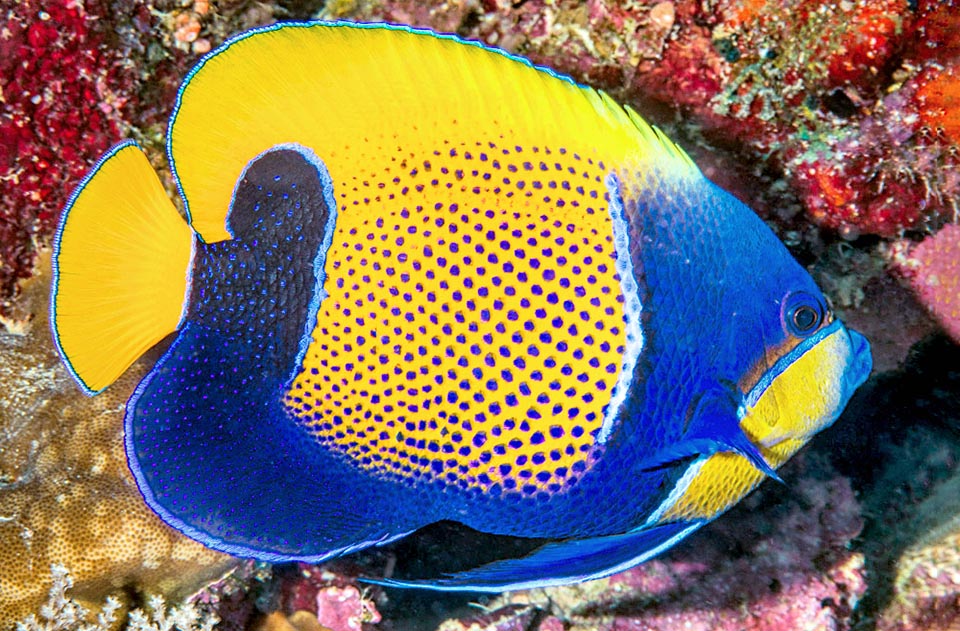
The Bluegirdled angelfish (Pomacanthus navarchus) is present in the tropical waters of the eastern Indian Ocean and in western Pacific Ocean © François Libert
Common in public aquaria, the Bluegirdled angelfish (Pomacanthus navarchus Cuvier, 1831) belongs to the class of Actinopterygii, the ray-finned fishes, to the order of Perciformes and to the colourful family of Pomacanthidae.
The etymology of the genus comes from the Greek “poma” = cover and “akantha” = spine, due to the presence of a showy defensive spine protruding from the preoperculum. The name of the species comes from the Latin “navarchus” = admiral of the fleet, with reference to the blue band it carries as shoulder strap, like the admirals.
Zoogeography
It is present in the tropical waters of the eastern Indian Ocean and of the western Pacific Ocean.
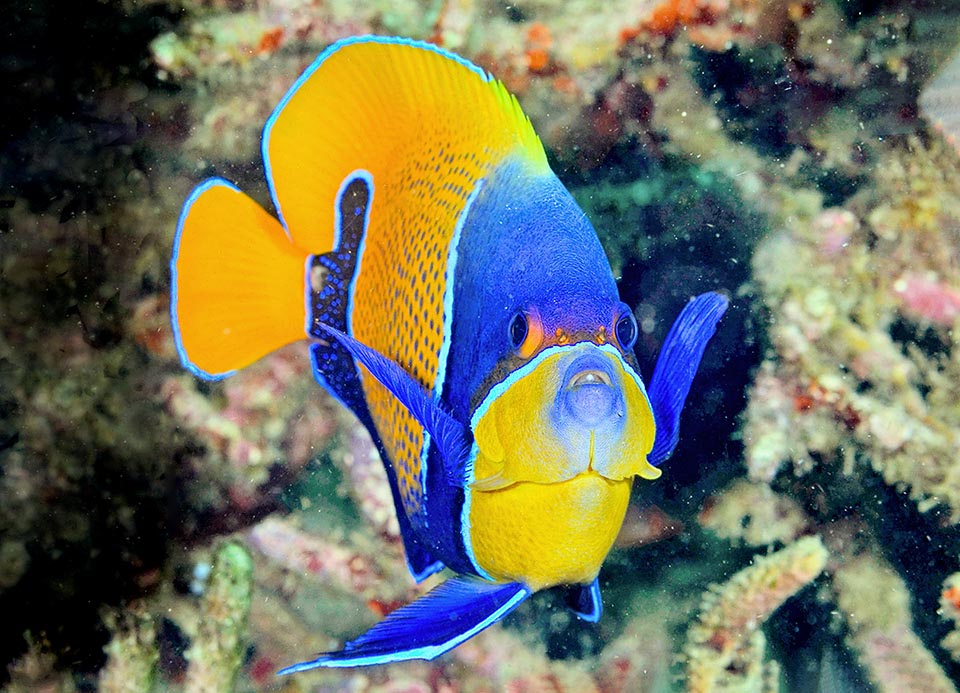
Shy, ready to hide into the labyrinths of the madreporic formations, lives in calm waters up to 40 m of depth © Benoit Lallement
Just to give an idea of its distribution, we find it at the Andaman Islands, in Indonesia, at the Palau Islands, in north Australia, in New Guinea, at the Solomon Islands, in Micronesia, Philippines, Taiwan and in the southern part of Japan at the Ryukyu Islands. Southwards, it reaches and stops at the Australian Great Barrier Reef.
Ecology-Habitat
It lives in the calm and clear waters of the lagoons, among the corals, and when the zone is sheltered, also on the outer side of the reefs up to about 40 m of depth. Being very shy, it keeps in the shade of the multilayered flat corals, ready to enter the labyrinths of their formation at the least sign of danger.
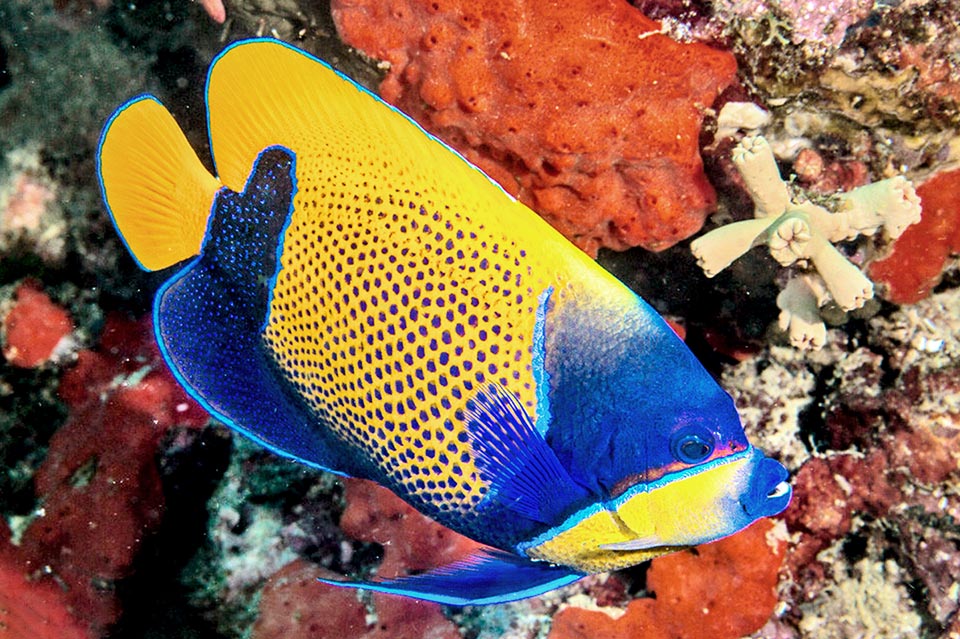
It rarely exceeds 26 cm. The body is flat, almost rectangular, but the snout elongated for rummaging among madrepores looking for food © Tim Cameron
Morpho-physiology
It rarely exceeds the 26 cm. The body is flat, almost rectangular, but the elongated snout for rummaging among the madrepores.
It has a big dorsal fin rounded at the apex which counts 13-14 spiny rays and 17-18 soft. The anal fin, also rounded and almost specular, shows 3 spines and 18 unarmed rays. The pectoral fins are rounded on the lower edge and the ventral ones, spineless, are long and pointed. The caudal is rounded.
The livery has few competitors. On the base colour, yellow orange, over the showy bluish lips, we note, on both sides, an electric blue oblique stripe crossing the operculum and ending just after the attachment of the ventral fin.
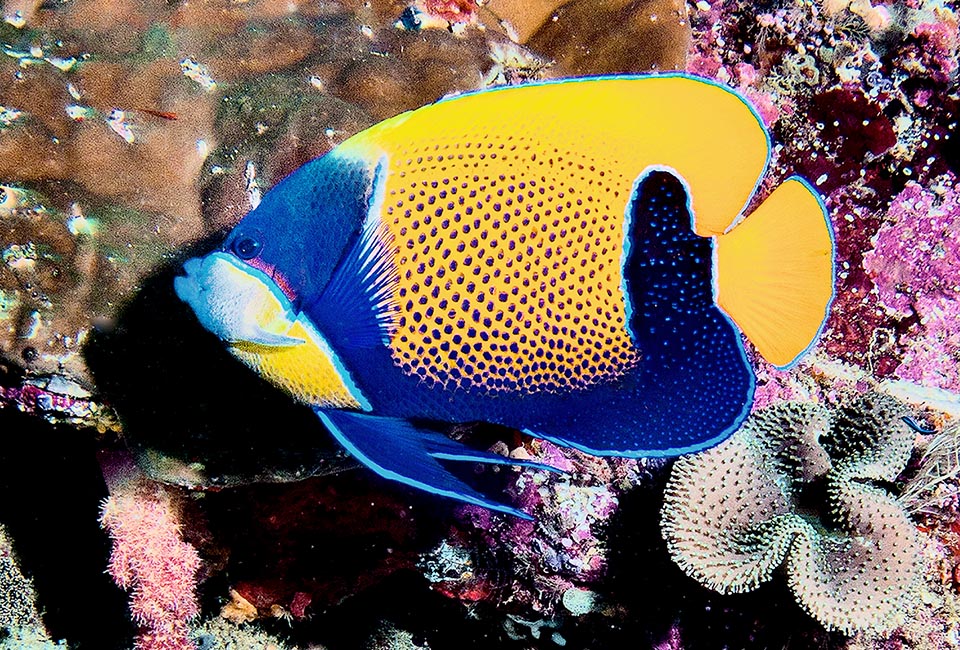
It eats vegetables and invertebrates, mainly sponges and ascidians, it nibbles with its robust lips and the numerous brushy teeth © Karen Honeycutt
In a rearmost position, by the end of the first third of the body, an analogous vertical stripe, slightly curved, delimits a dark violaceous blue zone which extends downwards interesting the entire anal fin and then going up to the base of the dorsal, delimiting, with the usual electric blue edge, the end of the body and the zone of the caudal peduncle.
The ventral fins are violet blue, with the electric blue fore border present also in the spotting of the anal and at its extremity, as well as in those of the tail and of the dorsal.
On the sides, in the orange yellow zone of the body, the scales have a characteristic dark blue spot which enriches the livery by creating a sort of a reticulum.
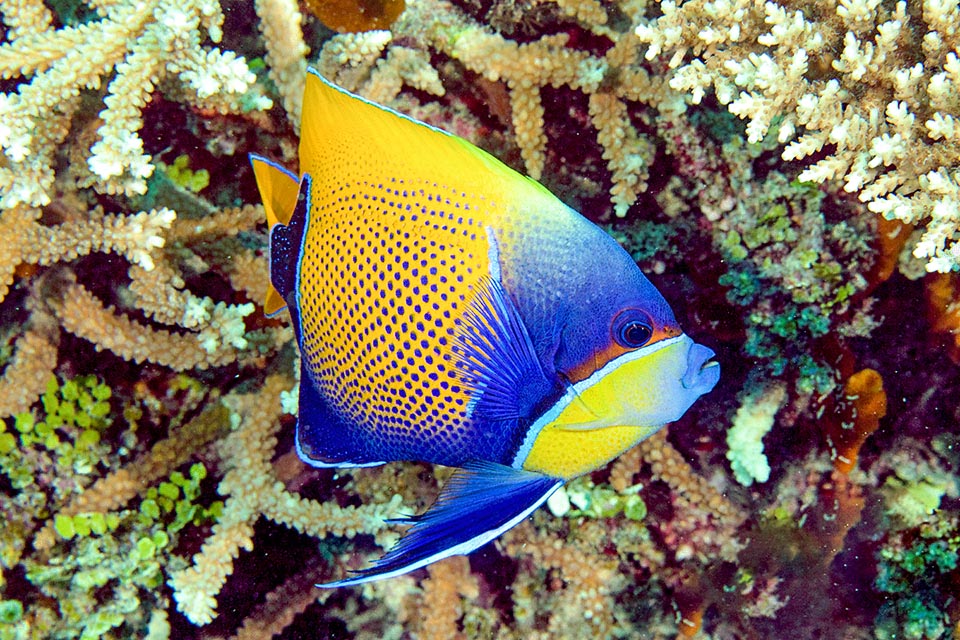
Lives alone or paired. The females, reached a certain size, may turn to males, and may hybridize with Pomacanthus xanthometopon © Mark Rosenstein
The juveniles are completely different: black with bluish vertical lines, more or less curved, and a transparent caudal fin. The yellow-orange colouration will appear later on, starting from the dorsal fin.
Ethology-Reproductive Biology
Pomacanthus navarchus lives solitary or in pairs. It nourishes of seaweeds and of invertebrates, especially sponges and ascidians which it nibbles with its robust lips and its numerous brush-like teeth. It is a protogynous hermaphrodite species, with females that once reached a certain size, can turn to male, and not rare are the hybrids with Pomacanthus xanthometopon.
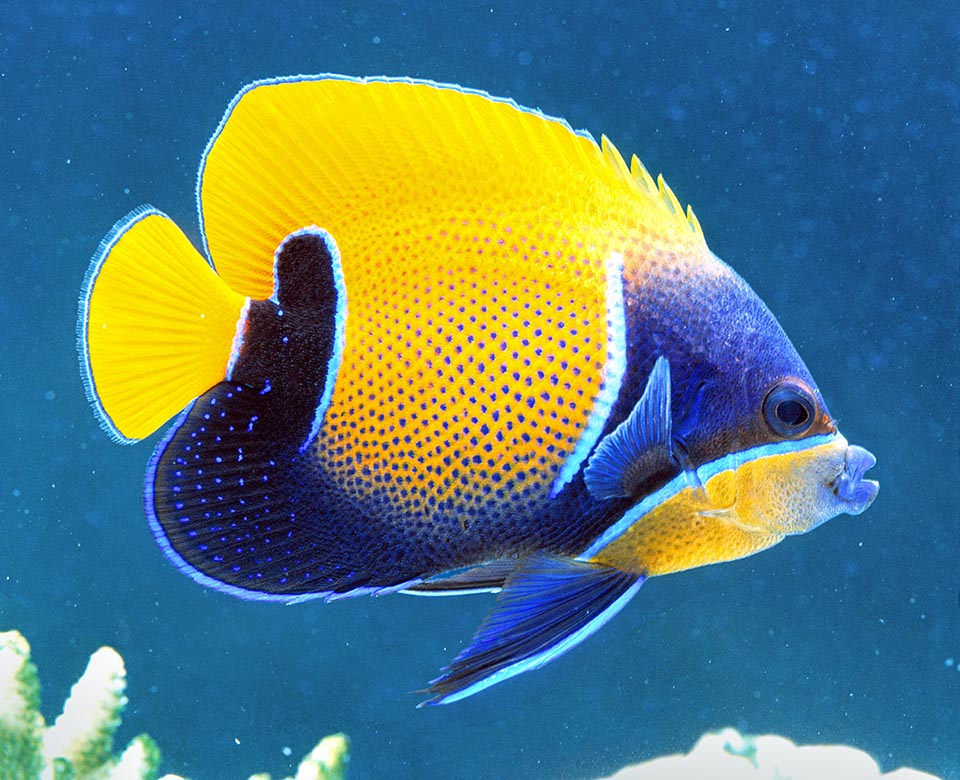
Pomacanthus navarchus is a long-lived species that in public aquaria reaches even 15 years of age. The resilience is low, but is poorly fished and hence is not endangered © Giuseppe Mazza
Eggs and and larvae are pelagic and the young have a lifespan of about 15 years.
The resilience of the Bluegirdled angelfish is very low, with a minimum doubling time of the populations of 4,5-14 years, but in return, even if often caught for the aquaria, the fishing vulnerability index marks only 18 on a scale of 100. Consequently, Pomacanthus navarchus appears as “Least Concern”, that is at low risk of extinction, in the Red List.
Synonyms
Euxiphipops navarchus – Cuvier, 1831; Holacanthus navarchus – Cuvier, 1831; Pomacanthodes navarchus – Cuvier, 1831.
→ For general information about FISH please click here.
→ For general information about BONY FISH please click here
→ For general information about CARTILAGINOUS FISH please click here.
→ To appreciate the BIODIVERSITY of BONY FISH please click here.
→ To appreciate the BIODIVERSITY of CARTILAGINOUS FISH please click here.
